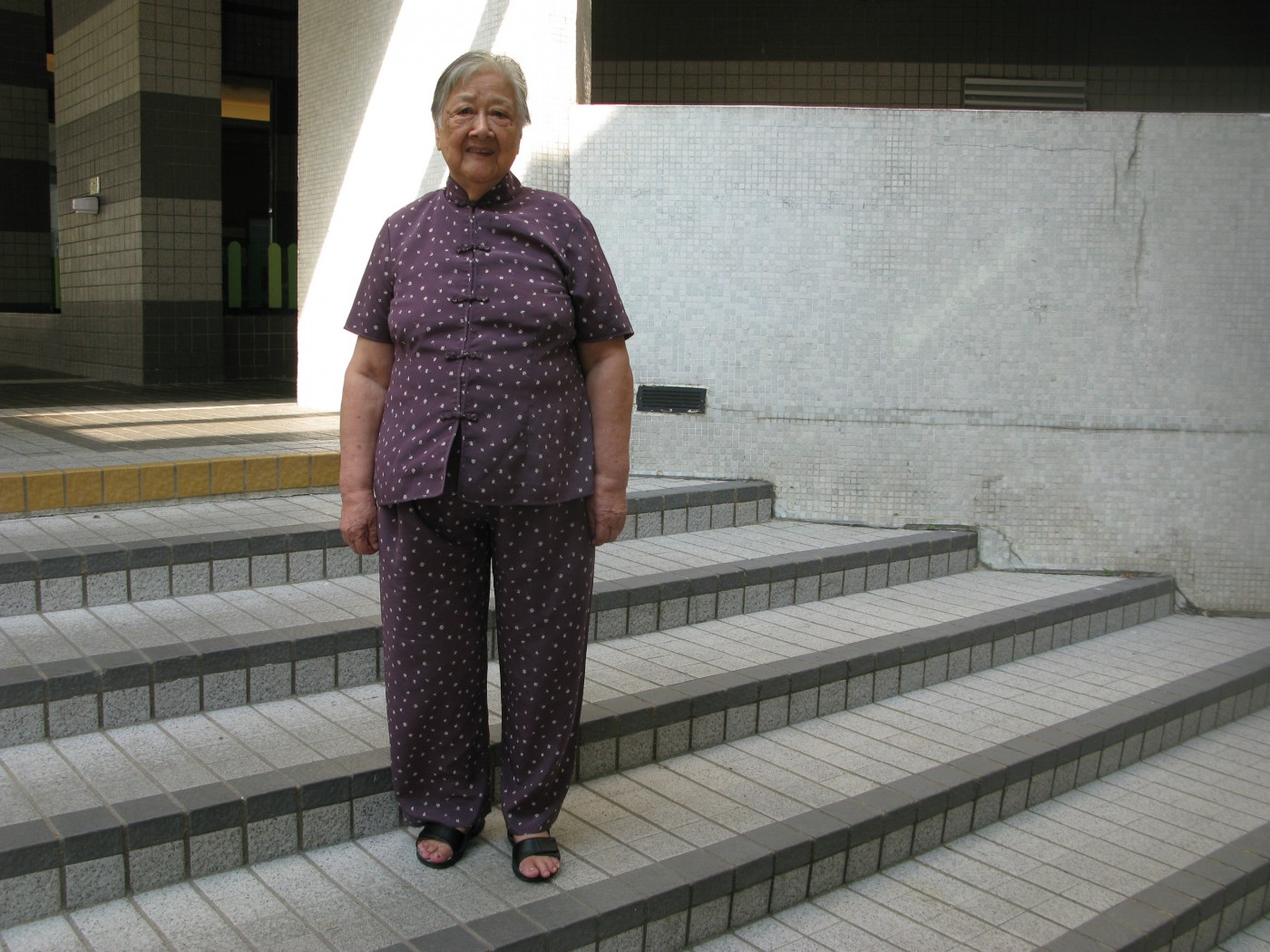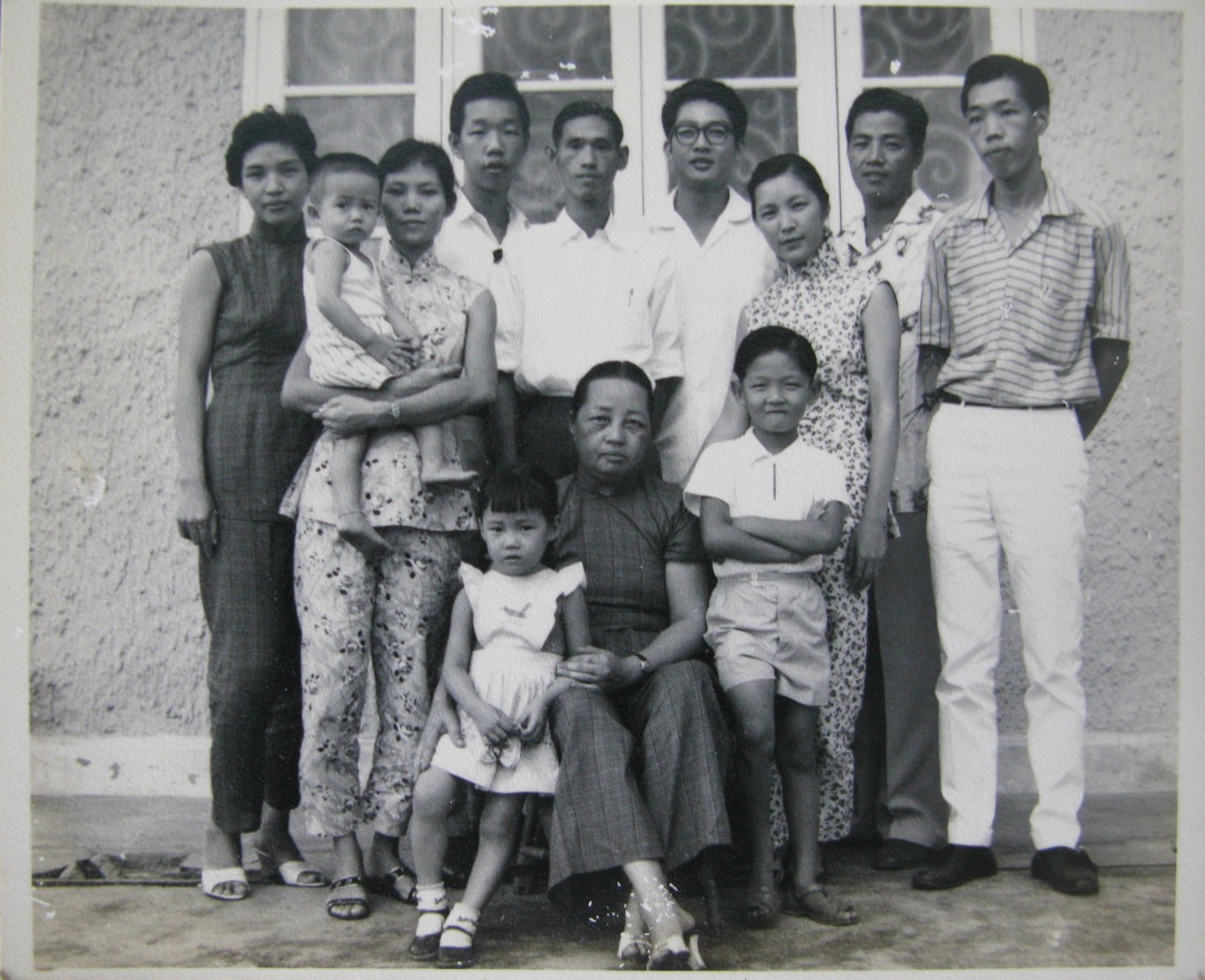- youtube
- bluesky
- Home
- About
- Costume Journal
- Membership
- Conference & Events
- Grants & Awards
- News & Social
Anushka Tay carried out a study of the Chinese pyjama suit for her MA Fashion Cultures project ( London College of Fashion).
Anushka was dedicated to a material culture approach in her research; after discovering there are few examples of Chinese pyjamas in UK museum collections Tay was able to use the Yarwood award to fund a trip to Singapore and Hong Kong to conduct primary research.
Yarwood Award Report:
For my Masters dissertation I knew that I didn’t want to research what typically springs to mind when you utter the words ‘period costume’. Whilst I love the European fashion history that is familiar to us all, I was intent on contributing to the research of different dress styles around the world, and I decided to investigate samfu.
A Cantonese term meaning literally top, trousers, samfu is a unisex, two-piece outfit that was frequently worn by working-class Chinese people around the world until around the 1970s. Always an ethnicised garment, during the 1940s and 1950s it also made a cross-over into US fashion as ‘Chinese pyjamas’, where it was associated with luxury and leisure-traits that were entirely at odds with its connotations in Asia. I was fascinated by the dual meanings that the garment seemed to hold, which were in such opposition. However, I soon discovered that researching this garment would prove more challenging than I’d forseen.
Unlike its sexier counterpart the cheongsam dress, samfu have been significantly under-researched in both popular and academic texts. I was initially keen to take a material culture approach; however, I didn’t find it easy to find examples of the garments to study. The lack of both material culture and written research of this typically working-class, everyday garment suggested that it had not been considered important enough to preserve. I was firm in the belief that samfu had once been a regularly-worn style of clothing, and began to realise that this might be due to a specific regional wearing of the garment, perhaps being more common to the diasporic Chinese communities in Malaysia and Singapore. I needed to be more creative with my research methods, and turned to the people-based research methods of oral histories, family photograph albums and personal wardrobes. Initial enquiries in the UK were limited, and I realised that the research necessitated a trip abroad in order to meet with and talk to members of the Chinese communities of Singapore and Malaysia.
The Yarwood Award enabled me to make this essential trip, as it covered the majority of the costs of travel. I spent a week in Singapore and five days in Hong Kong. I was fortunate in being able to stay with family and friends, who quickly introduced me to a local view of these places. Whilst abroad, I was able to conduct three interviews, and view several of my interview subjects’ family photographs. The interviews introduced me to new considerations of samfu that I had previously been unaware of, suggesting particular theories regarding its wear and stylistic development. Engaging with people who had strong memories of a period when the samfu was everyday attire enhanced my Masters dissertation in many ways.
I was curious as to whether the lack of publications featuring the samfu might be due to a regional bias, and so I spent time researching in the National Library, Singapore, and the Hong Kong Central Library; I also visited large bookshops in both places to browse their Fashion History sections. I was somewhat surprised to discover that the texts available were dominated by volumes on European couture designers. However, the National Library in Singapore had excellent English language sections dedicated to South-East Asian political and cultural history, which underpinned the contextual background of my dissertation.
I also wanted to discover how familiar events in history would be presented in Asia compared to how they’re taught in the UK, and so a signifiant part of my trip was visiting the National Museum of History and the Hong Kong Heritage Museum. Whilst my remit was cultural history, these museums also provided a fascinating intoduction to the two nations’ local histories, and their relationship with England as part of the British Empire.
The trip to Singapore and Hong Kong was key to researching my Masters dissertation. Whilst abroad, I not only met people, visited museums and carried out interviews, but discovered concepts, theories and different approaches to history that I would have been unlikely to come across otherwise. The opportunity to engage directly with the cultural production of the countries I was researching was an integral part of a project that investigated moments of cross-cultural fusion, as was the opportunity to meet with some of the people whose cultural heritage I was studying. Thank you very much to everyone at the Costume Society for your support!
The trip to Singapore and Hong Kong was key to researching my Masters dissertation. Whilst abroad, I not only met people, visited museums and carried out interviews, but discovered concepts, theories and different approaches to history that I would have been unlikely to come across otherwise. The opportunity to engage directly with the cultural production of the countries I was researching was an integral part of a project that investigated moments of cross-cultural fusion, as was the opportunity to meet with some of the people whose cultural heritage I was studying. Thank you very much to everyone at the Costume Society for your support!
Image gallery

Anushka Tay

Anushka Tay

Anushka Tay

Anushka Tay

Anushka Tay